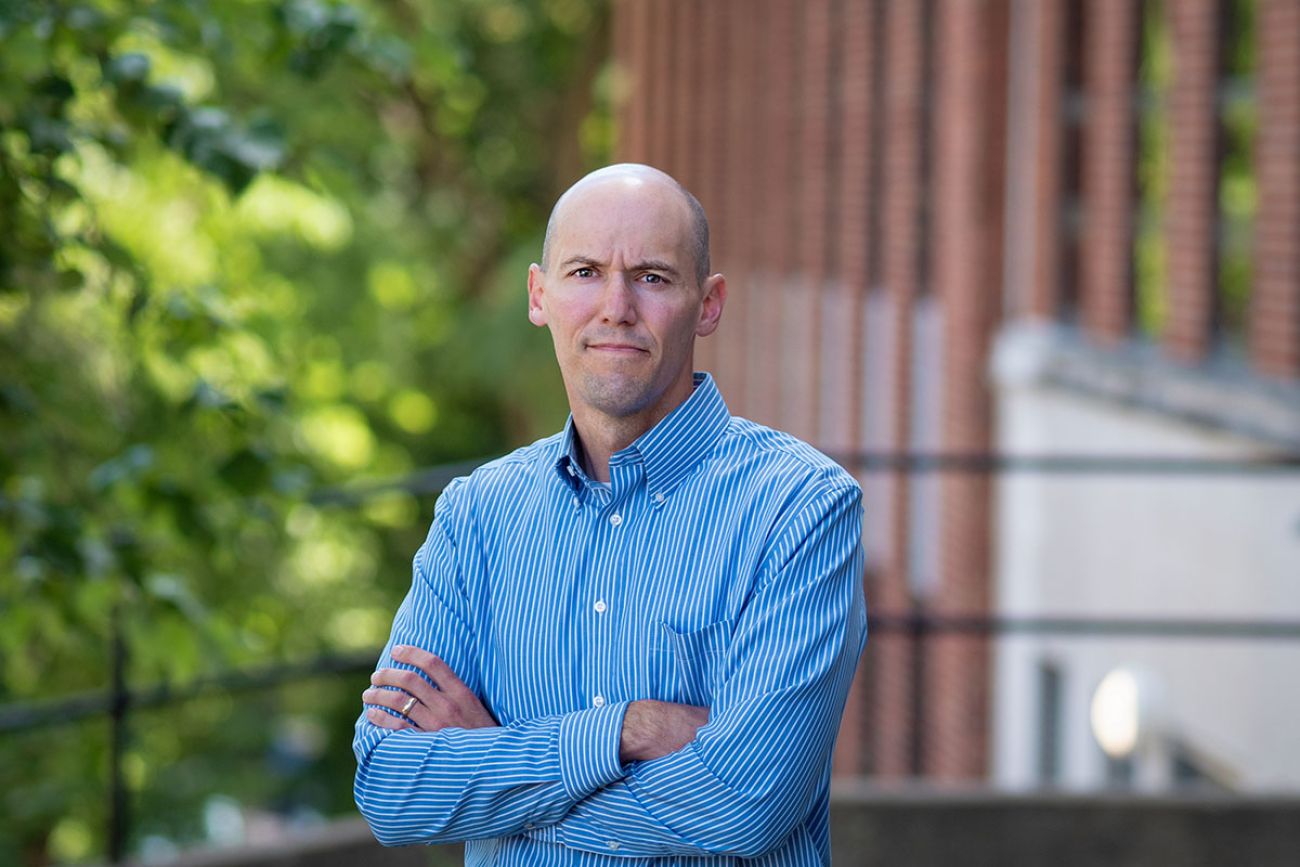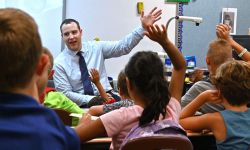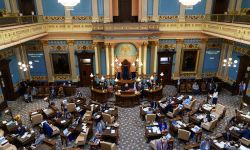U-M expert probes psychological effect of active-shooter drills in schools

- Michigan law requires schools to conduct active-shooter drills
- A University of Michigan violence prevention expert sits on a new federal panel to study how those drills affect students’ and staff’s health and well-being.
- But how does one measure such a thing?
A federal panel met for the first time this week to examine the psychological impact of school-based active-shooter drills on students and staff.
Justin Heinze at the University of Michigan sits on the 14-member panel of experts in firearms, education, campus and public safety, medicine, mental health, law and terrorism. Heinze is an associate professor of health behavior and health education at U-M and co-director of the National Center for School Safety.
The panel was convened by the National Academies of Sciences, Engineering and Medicine, and it met for the first time Thursday. The goal is to build on current but limited research on the emotional effect from active-shooter drills and to find consensus on best practices that both mitigate emotional harm to K-12 students and staff during practice runs and bolster student safety in the event of real shooting.
Related:
- As Michigan boosts school security after shootings, how much is too much?
- Oxford Michigan school shooting shows limits of heightened security
- Opinion | I feel sick leading active-shooter drill for preschoolers
- Opinion | Michigan doesn’t need another school safety commission. It needs action
The committee is expected to finalize its report by the summer of 2025.
Bridge spoke with Heinze by phone about the panel's mission and how one can measure the psychological toll of an active-shooter drill. Among the other questions that the panel seeks to answer: Do drills impact groups of students differently — students with disabilities, for example, or students in communities of color?
Heinze answered questions for himself, and not on the behalf of the committee, he noted.
The interview has been minimally edited for brevity and clarity.
Q: What do we know — and not know — about active-shooter drills in Michigan?
In the state of Michigan, there is a requirement that schools engage in some form of active-shooter training, (but) there are a lot of question marks even in the definition. What do we mean by an active-shooter drill? Do we mean a lockdown drill, or a lockout drill (or) shelter in place? There's a lot of license in terms of how these drills are planned and implemented.
The scientific literature is a little underdeveloped: What are sort of the best practices? Do we know that (drills) have a positive or negative impact on students? Do they help students feel more prepared? Can they be scary to students? Do they have benefits, like physical security benefits?
Certainly some of the anecdotes, where (schools) have simulated gunfire or had people dress up and pretend like they were shooters … have been experienced very negatively by both students and staff.
Q: How do you measure emotional or psychological impact?
The best thing that we can do often is to ask them. We can use surveys, interviews and focus groups.
One of the challenges is conflating how you feel about specific aspects of school safety and school security with other parts of your school (day). Is it that the drills are scary to you? Or is it that there might be a law enforcement officer with a firearm in the building that might be scary to you or reassuring to you?
And what are students seeing when these drills are happening? Are students taking them seriously? Are they laughing?
Q: Wait. Laughing — as in, they think it’s a game?
Perhaps students are laughing and joking because they know this is a drill. It's not a big deal (to them.) This is 15 minutes off of class time.
It could be nervous laughter and they joke about it almost as a defense or a coping mechanism. …
… It's not just students that are affected by these things. It's building staff, it's parents, it's broader community members. We've had parents tell us that their kids have come home, or they've been called by their children who've gone through an active-shooter drill, and they were scared. They thought it was real.
That affects parents too. …
… A big (question) for me is: What happens afterwards? I wonder about the impact of drills on learning. When you've had an active-shooter drill, how easy is it to go back to your regular classroom environment and return to reading, writing and arithmetic? How are schools responding to students who are negatively impacted by these drills?
Q: And what do you hope will be the practical application of this study?
We know schools are implementing these drills, so how can we do them in a way that supports the safety concerns of the building, but then also in a way that's not potentially harming students — not making them so scared that they’re making phone calls and saying, ‘I thought this was real and now I'm scared or traumatized’?
(The committee will) think through what are some of the best practices. Does that mean giving notification beforehand, or is the element of surprise — a realistic scenario — beneficial? There are arguments on both sides.
We're trying to understand the balance between the preparation piece (of active-shooter drills) and how it's impacting folks in the building.
See what new members are saying about why they donated to Bridge Michigan:
- “In order for this information to be accurate and unbiased it must be underwritten by its readers, not by special interests.” - Larry S.
- “Not many other media sources report on the topics Bridge does.” - Susan B.
- “Your journalism is outstanding and rare these days.” - Mark S.
If you want to ensure the future of nonpartisan, nonprofit Michigan journalism, please become a member today. You, too, will be asked why you donated and maybe we'll feature your quote next time!








